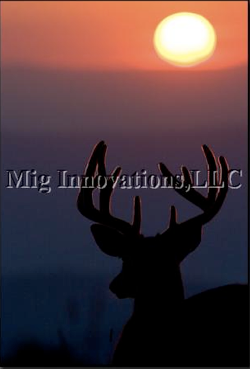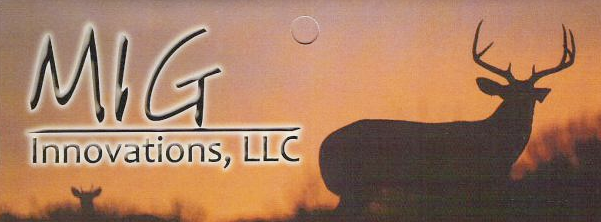Now is the time to get everything ready for bow season. Although I spend all year looking for deer sine and potential stand sites, I really start to kick it in to gear about now. I will go and really see if any thing has changed from last year and get an idea of how the deer are traveling. Deer will bed during the day and feed at night, the idea is to catch them from their way to and from these two points.
Before I go out to a potential new hunting spot I will look at it on Google Earth and get an idea of the lay of the land. I try to get an idea of where might be the best places to hunt so I can maximize my time out in the field. When I am looking at it, I look for potential bedding areas, potential feeding areas, hills, valleys, water and anything else that might effect how the deer will move thru the area that I am planning to hunt.
Deer are lazy, they will take the path that is the easiest for them. Because of this they will take valleys and ridges as much as possible. Look at almost every valley there will almost always be a deer trail down the middle of it, the likewise will be for the ridges. A deer trail is a path that is used by deer on a regular bases, the result is lack of vegetation on the path that they take, making a highway thru the woods.
When I am out in the woods scouting things that I will look for are, bedding areas, feeding areas, valleys, deer trails, tracks, droppings, exedra. I feel the most important thing to finding the place to put your stand is to find the most traveled trail between bedding and feeding. Look at the tracks in the trail most of them will be in the same direction. So if the tracks in the trail are facing away from bedding and toward feeding, you can assume that a stand placed on this trail will be most productive in the evening. The same will go for if the tracks where facing bedding will be most productive in the morning.
Now is the time to go over your tree stands and equipment and make shore that it all in working order. Sound proof the tree stands and any other gear that might make noise in the woods. If you use any lubricants make shore that you use one that will work at all temperatures. Some lubricants can make it even noisier than if you didn’t use any at all in cold temperatures. Even thou the cold weather is a long time out, you don’t want to take time that to mess with your stands in the middle of hunting season. I personally don’t lubricate my stands because of the varied of temperatures that I hunt in. In early season it can be in the 80’s a lot of the time, but I have been out bow hunting when it was in the 90’s. In late bow season I have been out in when it has been in the -20’s.
Practice shooting your bow, if you don’t everything else you do will be in vain. Practice at a low poundage and focus on form and shooting consistently. After the season in early winter I will drop my poundage on my bow to about 55lb. than I practice all year and about this time of year I will start to increase the poundage back up to 70lb. Make shore you know your effective range of not only your bow but your shooting ability. I feel that my effective range right now is 50 yards, and unless it is a really nice shoot that I know that I can hit it and kill it I will not take the shot.
Saturday, June 20, 2009
Subscribe to:
Post Comments (Atom)
.jpg)






Caleb,
ReplyDeleteGreat post that covers some things that I didn't think of. Like your comment on my post
Season Prep Starts Now.
Regards,
Albert
The Rasch Outdoor Chronicles.
Where do Donations to the HSUS Go?.
Albert,
ReplyDeleteyour post "Season Prep Starts Now" is what gave me the inspiration for this post, and I think that every one should read it.I strongly recommend that everyone reading this should visit the link that Albert has linked above in his comment, unless of corse you have already been there and read it, but than again it doesn't hurt to read it again. I know I am going to go and read it again.
When I do early season scouting, I deliberately ignore buck sign as much as possible and place my stands where the does seem to be moving heavily. In the really early season scouting(June, July, and most of August), I'll ignore all large hoof prints I find that might be from a buck. In September, rubs will be seen; October will bring scrapes. I try to ignore all these things for two reasons: First, bucks tend to have a change in their moving patterns by the time bow season finally rolls around. They are no longer in bachelor groups, and their bedding areas change as they become more isolated. Rubs and scrapes are nice to see, but I only use that information as reassurance that bucks are in the area. From my own experience, bucks will tend to the scrape and rub lines well into the night, so the odds of getting a shot on a scrape line seem to be slim. Second, I prefer to hunt the rut more than any other part of the season. During the rut, the bucks will be with the does. If you find the does, you will find the bucks. Does don't seem to change their moving patterns unless they are constantly spooked out of an area. If you pay attention to your scent and your stand location, you'll see the big bucks eventually.
ReplyDelete